House Numbers on Brick: Exploring Unique Materials and Designs
Hey there, homeowner! Have you ever stopped to think about how much your house numbers contribute to your home’s curb appeal? It might seem like a small detail, but trust us, those little digits can make a big impact. Not only do they help visitors and delivery drivers find your place, but they also add a touch of style to your home’s exterior. And when you pair them with a brick surface? Now that’s a winning combination!
To make your house numbers pop against your brick, choose a contrasting material, like metal. There’s just something about the way smooth, sleek metal looks against the rustic texture of brick that’s so visually appealing. Plus, with all the different metal finishes out there, from classic bronze to modern cast aluminum, you’re sure to find one that perfectly matches your home’s style.
In this article, we’ll dive into all the factors that go into creating a house number display on brick that’s both practical and stylish. We’ll talk about everything from sizing and placement to the pros and cons of different material options. By the time you’ve finished reading, you’ll know how to choose a house number display that not only helps people find your home but also adds a touch of personality to your property’s exterior. So, what do you say? Let’s get started!
Choosing the right material for an impactful design
Here are some of the most popular metal materials for house numbers and how they work with brick surfaces.
- Bronze numbers: Bronze is a classic choice that adds a touch of elegance and sophistication to any home. It develops a beautiful patina over time, which can complement the natural aging process of brick. Bronze is also highly durable and corrosion-resistant, making it a great low-maintenance option.
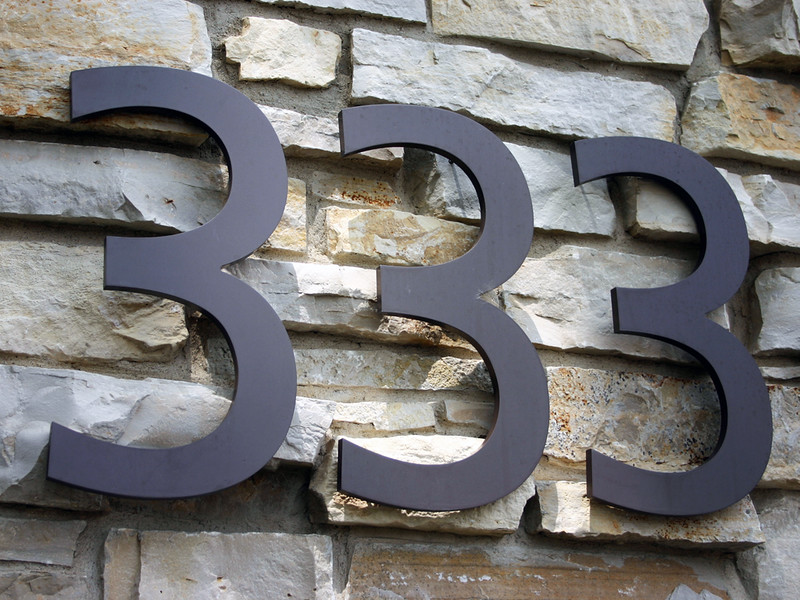
- Stainless steel numbers: Stainless steel is an excellent choice for a sleek, modern look. It offers a bright, brushed or polished finish that contrasts beautifully with the rustic texture of brick. Stainless steel is also highly resistant to rust and tarnishing, ensuring that your house numbers will look great for years to come.
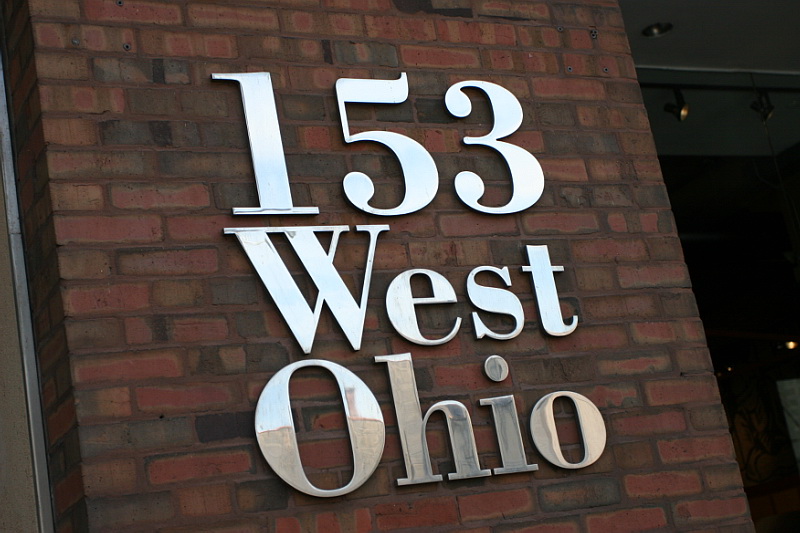
- Corten steel numbers: If you’re looking for a material with a unique, industrial vibe, consider corten steel. This material develops a distinctive rust-like appearance over time, which can add a sense of depth and character to your brick exterior. Corten steel is also incredibly durable and low-maintenance.
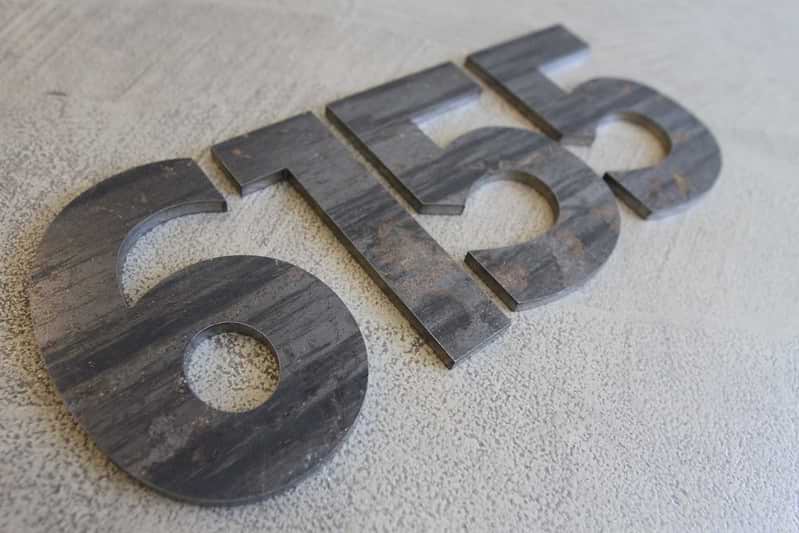
- Aluminum numbers: Aluminum is a lightweight, affordable option with a clean, contemporary look. It can be finished in various colors and textures to complement any brick color or style.
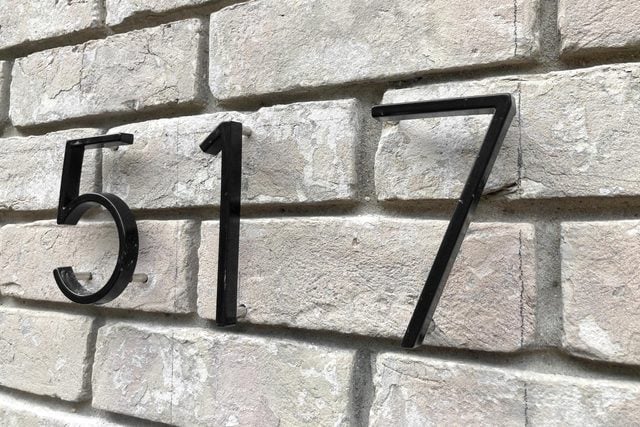
- Copper numbers: Copper is another material that develops a beautiful patina over time, shifting from a bright, shiny finish to a rich, greenish-blue hue. This aging process can add warmth and character to your brick exterior. Copper is also naturally corrosion-resistant and can last for decades with minimal maintenance.
- Cast bronze numbers: Cast bronze numbers offer a more traditional, ornate look. They are crafted using a time-honored casting process that allows for intricate detailing and a sense of depth.
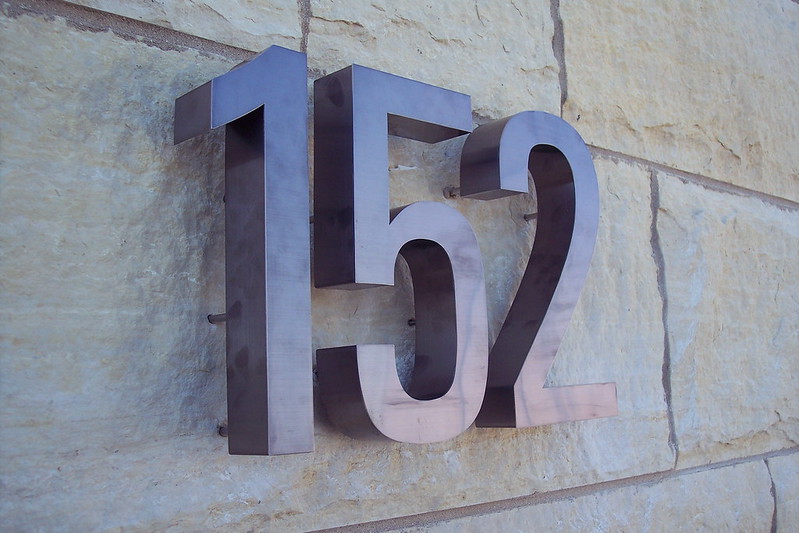
- Cast aluminum numbers: Similar to cast bronze, cast aluminum numbers offer the opportunity for intricate designs and a sense of depth. However, aluminum is a more affordable and lightweight option compared to bronze.
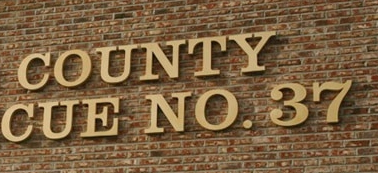
The important aspect to consider here is the overall style of your home and the look you want to achieve. Think about how the material will age over time and whether that aligns with your desired aesthetic. Also, keep in mind the level of maintenance each material requires to ensure that your house numbers continue to look great for years to come.
Other design considerations for house numbers
While the material you choose for your house numbers on brick is important, there are several other design factors to consider to ensure that your display is both functional and visually appealing.
Font style and legibility
While decorative or cursive fonts might seem appealing, they can be more difficult to read from a distance. Instead, go for a simple, clean font that prioritizes legibility.
Sans-serif fonts like Arial, Helvetica, or Verdana are often good choices for house numbers as they are easy to read and have a modern, streamlined appearance.
In our experience, the most preferred fonts for traditional facades are Architectural, Times New Roman, and Garamond, while the most popular fonts for modern buildings are Futura, Ribbon, and Kabel.
Size matters
Your house numbers should be large enough to be easily visible from the street, even at a distance. This is especially important for emergency services, delivery drivers, and visitors trying to locate your home. Here’s a standard size chart for house numbers, depending on their distance from the street, for optimum visibility.
| Distance between the street and the location of the number | Minimum height recommended for the house number |
|---|---|
| 0 – 69 feet | 3 inches |
| 70 – 110 feet | 4 inches |
| 111 – 132 feet | 5 inches |
| 133 – 160 feet | 6 inches |
| 161 – 300 feet | 8 inches |
| 301 – 385 feet | 10 inches |
However, be careful not to go too large, as over-sized numbers can overpower your home’s facade and detract from its overall appearance. A good rule of thumb is to choose numbers that are around 4 to 6 inches tall for a single-story home and 6 to 8 inches tall for a two-story home.
Lighting and decorative elements
Consider incorporating lighting or other decorative elements to enhance the visibility and visual appeal of your house numbers. Backlit numbers, for example, can create a striking, contemporary look while improving visibility at night.
You could also consider adding a decorative border or frame around your numbers to create a cohesive, polished appearance. Just be sure not to let these additional elements overpower or obscure the numbers themselves.
Mounting options
Finally, think about how you want to mount your house numbers on your brick surface. The two options are – floating numbers or number panels.
Floating numbers are individual numbers that are attached directly to the brick surface, creating a clean, minimalist look. Number panels, on the other hand, involve attaching the numbers to a separate panel or plaque, which is then mounted on the brick. This option allows for more flexibility in terms of material and design, and can create a more substantial, cohesive appearance.
How to choose the best location for your house number
When deciding on the best location, think about the color and texture of the brick surface, lighting conditions throughout the day and night, and any local regulations that may dictate placement. Find a balance between functionality and design. While the front door or a prominent wall may seem like the most obvious choices for visibility, they might not always offer the best visual impact.
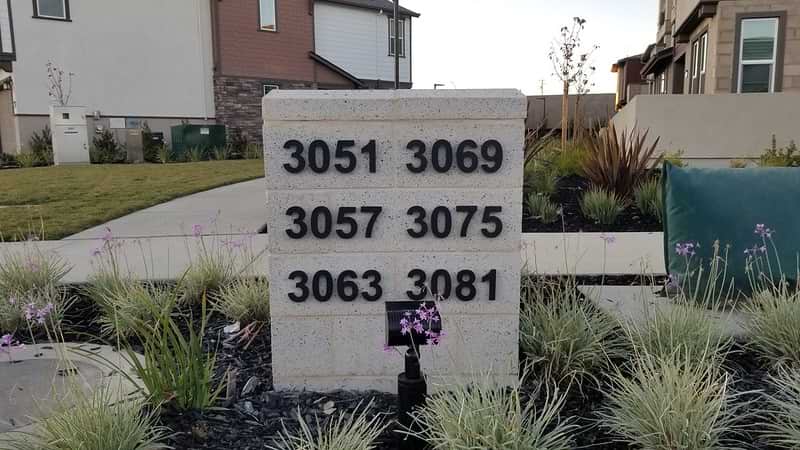
Another factor to keep in mind is the viewing angle and distance from the street. Your house number should be easily readable from a distance, so consider how the location you choose affects legibility. Walk across the street and assess the visibility from different angles to ensure your chosen location is optimal.
Top location ideas
- Above or next to the garage door: This location offers excellent visibility for homes with a garage facing the street. It’s a practical choice that can also add a decorative element to an otherwise plain garage exterior.
- On the front door: While this location may seem intuitive, it can be challenging to accommodate large enough numbers to be seen clearly from the street. However, if your front door is close to the road or you have a clear, unobstructed path, this could be a viable option.
- Next to the front door: Placing your house number to the side of your front door can be a great compromise between visibility and aesthetics. It allows for larger numbers that are easily seen from the street while still being a part of your entryway design.
- On a wall: If your home has a prominent wall facing the street, this could be an ideal location for your house number. It provides ample space for larger numbers and can create an eye-catching focal point.
- On a planter or wall in the front yard: For homes set back from the street, placing your house number on a planter or low wall in the front yard can help improve visibility. This option also allows for creative integration with your landscaping design.
The key is to find a location that balances visibility, legibility, and aesthetic appeal. Take the time to explore different options and consider how each location impacts the overall look and functionality of your house number.
Tips for installing your house number
Now that you’ve chosen the perfect house number design and material, it’s time to install it on your brick surface. Proper installation is important when ensuring your numbers look great and remain securely attached for years to come.
Here’s a step-by-step guide to help you achieve a professional-looking installation.
For floating numbers:
- Find the center point where you want to place your numbers and mark a vertical line using a level.
- Measure the width of your number set and divide it by two to find the distance from the center line to the first and last number.
- Use a ruler or measuring tape to mark the position of each number, ensuring they are evenly spaced and level.
- Impact Signs’ address numbers come with a paper template showing where to drill the holes. Align the template with your marks and tape it in place.
- Drill pilot holes through the template into the brick using a masonry drill bit.
- Remove the template and screw the threaded stud mounts (included with Impact Signs’ numbers) into the back of each number.
- For a floating effect, use the included spacers between the numbers and the brick surface.
If you’re going for an illuminated display, it’s important to have an electrical junction installed nearby. Consult with a licensed electrician to ensure the wiring is done safely and correctly. They can also help you choose the best type of lighting for your specific setup.
💡 For a worry-free installation experience, consider hiring Impact Signs for professional mounting and setup. With teams located nationwide, we can handle every aspect of the installation process, ensuring your house numbers are perfectly placed and securely mounted.
Explore unique house number designs with Impact Signs
At Impact Signs, we get it – you want your house numbers to look amazing and last for years to come. That’s why we offer a variety of materials and styles to suit any brick home, whether you’re into the classic and traditional vibe or you’re all about that modern, minimalist look.
If you’re a fan of timeless elegance, our cast bronze numbers might be just what you’re looking for. Or, if you prefer something with a more contemporary feel, our sleek stainless steel options could be the perfect fit. And for those who love a unique, industrial aesthetic, our Corten steel numbers are sure to make a statement.
But no matter which material you choose, you can trust that Impact Signs will deliver top-notch quality and craftsmanship. We’re all about the details, and we’ll make sure your new house numbers look incredible and stand up to whatever nature throws their way.
So, what do you say? Ready to give your home’s curb appeal a major upgrade? Connect with Impact Signs today, and let’s start designing your one-of-a-kind house number sign!
